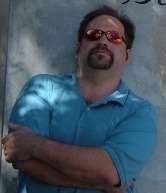OSKAR KOKOSCHKA, A FACE FOR OUR TIME
Uploaded by frankknee on Mar 1, 2010
EXPRESSSIONISM, ART, KOKOSCHKA, KLIMT, SHIELE, PAINTING
OSKAR KOKOSCHKA, A FACE FOR OUR TIME PART ONE OF 10
INSIDER VISION OF THE GREAT PAINTER
MESSAGE IN A BOTTLE FROM THE ARTIST FOR THIS CENTURY
CONTACT DIRECTOR, Francis Knize at 203 544 9603 frankknee@aol.com
Part 1 of 10
Part 2 of 10
Part 3 of 10
Part 4 of 10
Part 5 of 10
Part 6 of 10
Part 7 of 10
Part 8 of 10
Part 9 of 10
Part 10 of 10
Oskar Kokoschka, (1 March 1886 – 22 February 1980) was an Austrian artist, poet and playwright best known for his intense expressionistic portraits and landscapes.
[From Wikipedia]
Biography
Kokoschka was born in Pöchlarn. His early career was marked by portraits of Viennese celebrities, painted in a nervously animated style. He served in the Austrian army in World War I and was wounded. At the hospital, the doctors decided that he was mentally unstable. Nevertheless, he continued to develop his career as an artist, traveling across Europe and painting the landscape.
Kokoschka had a passionate, often stormy affair with Alma Mahler, shortly after the death of her four-year-old daughter Maria Mahler and her affair with Walter Gropius. After several years together, Alma rejected him, explaining that she was afraid of being too overcome with passion. He continued to love her his entire life, and one of his greatest works The Bride of the Wind (The Tempest), is a tribute to her. His poem Allos Markar[1] was inspired by this relationship. The poet Georg Trakl visited the studio while Kokoschka was painting this masterpiece. Kokoschka also commissioned a life-sized female doll in 1918.[2] Although intended to simulate Alma and receive his affection, the gynoid-Alma did not satisfy Kokoschka and he destroyed it during a party.[2]
Deemed a degenerate by the Nazis, Kokoschka fled Austria in 1934 for Prague. There, his name was adopted by the Oskar-Kokoschka-Bund, founded by other expatriate artists, although he declined to otherwise participate (K. Holz, Modern German Art for Thirties Paris, Prague, and London: Resistance and Acquiescence in a Democratic Public Sphere). In 1938, when the Czechs began to mobilize for the expected invasion of the Wehrmacht, he fled to the United Kingdom and remained there during the war. With the help of the British Committee for Refugees from Czechoslovakia (later the Czech Refugee Trust Fund), all members of the OKB were able to escape through Poland and Sweden.
In the Second World War Oskar Kokoschka and his wife lived in Ullapool, Wester Ross for several summer months. There he drew with colored pencil (a technique he developed for itself only in Scotland), and painted many local landscape views in watercolour.[3]
Kokoschka became a British citizen in 1946 and only in 1978 would regain Austrian citizenship. He traveled briefly to the United States in 1947 before settling in Switzerland, where he lived the rest of his life. He died in Montreux.
Kokoschka had much in common with his contemporary Max Beckmann. Both maintained their independence from German Expressionism, yet they are now regarded as its supreme masters, who delved deeply into the art of past masters to develop unique individual styles. Their individualism left them both orphaned from the main movements of Twentieth Century modernism. Both wrote eloquently of the need to develop the art of "seeing" (Kokoschka emphasized depth perception while Beckmann was concerned with mystical insight into the invisible realm), and both were masters of innovative oil painting techniques anchored in earlier traditions.
Kokoschka's last years were somewhat embittered, as he found himself marginalized as a curious footnote to art history. A noteworthy student of Kokoschka's "School of Seeing" was Konrad Juestel (1924–2001).
Writings
Kokoschka's literary works are as peculiar and interesting as his art. His memoir, A Sea Ringed with Visions, is as wildly psychedelic as anything written by others under the influence of actual hallucinogens.[citation needed] His short play "Murderer, the Hope of Women" (1909, set ten years later by Paul Hindemith as Mörder, Hoffnung der Frauen) is often called the first Expressionist drama. His Orpheus und Eurydike (1918) became an opera by Ernst Krenek, who was first approached for incidental music.
* * * *
Blog Author, Steven G. Erickson
stevengerickson AT yahoo Dot Com
Blog with my concerns:
http://thegetjusticecoalition.blogspot.com/
* * * *
Museum TV Kokoschka Exile and New Home Albertina Vienna
Text with video:
Uploaded by tehuti9999 on May 7, 2008
Beginning on 11 April 2008 the Albertina will show the most important of Kokoschka's later works. With the exhibition "Exile and New Home" the Albertina will make a comprehensive presentation of yet another - after Egon Schiele - pioneer of Austrian art. The show will be a continuation of the "late works" series initiated with Picasso. Like Egon Schiele, Oskar Kokoschka is one of the artists whose oeuvre constitutes a special research focal point of the Albertina. The exhibition will concentrate on Kokoschka's years of emigration and his search for a new country in which to live and work. Some 140 works will be on view, including 45 from the Albertina's own collection.
www.museum-tv.eu
www.albertina.at
Wassily Kandinsky (1866-1944)
Text with video:
Uploaded by mariana2062 on May 17, 2008
Wassily Kandinsky (1866-1944)
Music: Often a Bird, by Wim Mertens
Paintings on the slideshow:
Mit und Gegen
Gravitation
Heavy Red
Aufleuchten
Balancement
Merry Structure
Milieu Accompagne
Succession
Transverse Line
Two Black Spots
Weiches Hart
Upwards
Horizontale
Two Green Points
Yellow, Red, and Blue
Homage to Grohmann
Batonnets d'Appui
Reciprocal Agreement
Black and Violet
Blue
Cercle Jaune
Solid Green
Composition IV
Composition V
Composition VI
Composition VII
Composition VIII
Squares with Concentric Rings
Kokoschka's Doll
Text with video:
Uploaded by mudbath1 on Mar 28, 2008
Richard Bennett - piano
Gaku Takanashi - bass
Tony Lewis - drums
performed at The Jalopy Theatre, Brooklyn N.Y. 2008
http://www.myspace.com/rigato11
-


0 Comments:
Post a Comment
<< Home